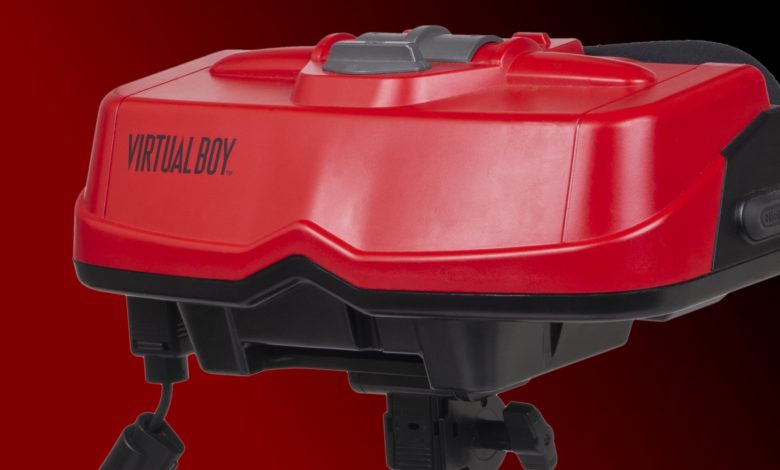
Former Virtual Boy tester recounts horrendous experience, was doomed from the start
When making a list of jobs we don’t want, we’re absolutely adding “tester for the Virtual Boy” to it. Unless you’re really dying to live inside Clockwork Orange. Hey, we won’t judge.
For those unfamiliar with the portable gaming console from Nintendo, you’re not alone. The Virtual Boy was a predecessor to what we now see as VR headsets. Developed by Gunpei Yokoi, the console could have propelled the industry in the Virtual Realty sphere decades before Oculus. Instead, it almost crippled Nintendo, much like the Red Ring of Death did for Xbox.
Competition leads to problems
The mid-’90s were a bustle of development from Nintendo and SEGA, and just like Xbox and PlayStation’s feud for dominance in the 2000s, the two companies were pushing new technology out the door and into consumer’s hands at a rapid pace. SEGA had already got one over on Nintendo with the Game Gear, the first handheld to include a colored screen. While the Game Gear didn’t outsell Nintendo’s Game Boy, it still proved SEGA had the tech to compete.
In an effort to regain their upper hand, Nintendo began work on a tabletop console capable of “stereoscopic 3D” graphics. Development took four years, starting in 1991, with a team of around 60 people under Yokoi. It’s obvious Nintendo believed in the project, at least on the surface. The company built a separate factory in China just to produce the consoles. However, sometime before its release, things began to sour. The high manufacturing costs and potential harmful effects on players ultimately created the issues that led to Virtual Boy’s failure.

It was also during this time that Nintendo started development on their next big home entertainment system, the Nintendo 64. When it became clear Virtual Boy was problematic, resources were reallocated to the N64. The Virtual Boy was pushed out market in 1995 in an unfinished state with only 19 titles in Japan, and 14 in North America in its catalog. According to Yokoi, the company did not seek outside development of games for the system on a large scale. As a result, the console was panned by critics, unpopular with players and only sold a total of 770,000 units before the whole project was scrapped in 1996.
Virtual Boy and testing nightmares
Like Xbox, there were early signs that Virtual Boy wasn’t a good fit for the new technology it was sporting. However, instead of it just effecting the consoles, the Virtual Boy was hazardous to the player. In a recent interview, Jim Wornell, former associate producer for Nintendo of America, told the folks at Did You Know Gaming? about the horrendous experiences testers for the Virtual Boy were put through.
On the outset, we mentioned Clockwork Orange, a rather uncomfortable book and movie set in a dystopian timeline. Wornell likened the testing process to a scene in the movie: “The scene where the person’s pinned down in the chair, and they’ve got their eyelids open? That was kind of like what Virtual Boy testing was like. They would dilate our pupils, they would have us sit with our heads in this vice type thing, and they would shine light in our pupils. They would have these plastic rods, they would have them just barely touching our eyes — and they would say ‘okay no matter what, don’t blink for a minute.”

Oh, and the weirdness didn’t stop there. “They would blow air into our eyes, they would have us play a Virtual Boy test kit for 10-15 minutes, then we’d have to rest,” continued Wornell. “Then they’d dilate our eyes again. 2 or 3 rounds of these just bizarre, inhumane torture tests just to make sure this thing wouldn’t kill me, or blind me, or whatever.”
Despite tests, further issues remained
Imagine using the eye test device at the DMV to play video games, and you’re not far from the design. Even with all the rigorous testing, the Virtual Boy still caused player to feel nausated, throw up and collapse due to dizziness, according to former SEGA president Tom Kalinske. The red and black graphics certainly didn’t help. In fact, Nintendo issued a warning that children under the age of seven should not play on the console. Eventually, concerns surrounding it caught the attention of those in the medical field. Alarm was raised that the Virtual Boy could possibly cause lasting brain damage. It was the final nail in the coffin.

It’s a stroke of luck, or maybe the way Nintendo reportedly shifted the blame onto Yokoi, but somehow the company suffered little financial damages from the failure. However, it completely tanked Reflection Technology, the US company behind the technology used in the Virtual Boy. Reflections Technology was devastated by the flop and soon closed down in 1997.
Nintendo, while pursuing 3D graphics throughout its continued reign, has yet to attempt another VR. That may be for the best, as I’m sure no one wants to repeat Clockwork Orange again.

